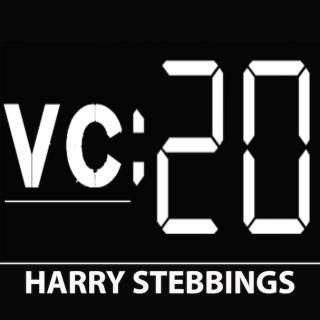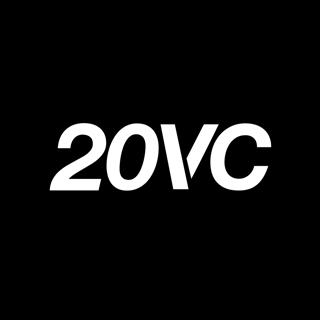
20 VC: Niko Bonatsos on Startup Valuations
It is a great pleasure to have Niko Bonatsos on today's episode of The Twenty Minute VC. Niko is Principal at General Catalyst Partners where he specialises in mobile, consumer and healthcare technology. At General Catalyst Partner, Niko has been involved in the investments in the likes of Snapchat, TuneIn and SpoonRocket, just to name a few. Niko is also reknowned for being the 1st Angel Investor in Yik Yak, recently valued between $300-400 million. In today's episode you will learn: How Niko made the jump into the world of Venture Capital? What were the fundamental lessons Niko learned when his startup failed? Why Niko prefers to invest in founding teams instead of individual founders? How Niko determines whether a startup will be successful or not? What Niko looks for in startups? Does Niko ever experience FOMO (fear of missing out) on an investment? How do you value a company, in particular a startup with no revenue? Does Niko think Silicon Valley will continue to be the dominant hub for innovation and investment? What parts of the world have seen large growth in both funding and innovation? What Niko would advise graduates looking to make the entry into the Venture Capital industry? What is the best piece of business advice Niko has ever received? We then move onto a quick fire round where Niko tells us his thoughts on the future of education technology and the primary reason Niko says no to startups. For all the resources mentioned in today's show, check out www.thetwentyminutevc.com We would love to hear from you. If you have any questions you would like to ask the VCs, drop us an email at harry@thetwentyminutevc.com Likewise if you have a VC you would like us to interview, send us an email and we will arrange it.
5 Feb 201522min

20 VC 009: Red Flags, Saas and becoming a VC with Joe Floyd
On today's show I am hugely excited to welcome Joe Floyd to the hotseat. Joe is Principal at Emergence Capital Partners. His expertise in building cloud startups has evolved over 10 years of advising and investing in startups. Prior to Emergence, Joe worked in American Capital's technology group where he focused on fast growing internet companies. At American Capital Joe was involved in their investments with the likes of PeopleMedia and HomeAway. Items Mentioned In Today's Show The Lean Startup by Eric Ries Predictable Revenue: Turn Your Business Into a Sales Machine with the $100 Million Best Practices of Salesforce.com Thinking Fast and Slow by Daniel Kahneman Nudge: Improving Decisions About Health, Wealth and HappinessNudge: Improving Decisions About Health, Wealth and Happiness What you will learn in today's show: How Joe made his transition from the world of tech investment banking into the Venture Capital industry? What Joe would advise an individual looking to get into the industry? What Joe believes to be the most important aspect that a startup must have in order to attain VC funding? Whether Joe prefers a founder or a founding team? Joe describes what the main red flags are when startups pitch? When Joe thinks of success, who is the first person that comes to mind? What business books have been the most transformative to Joe? We then delve into a quick fire round where Joe gives his immediate thoughts on the future of Amazon and Tesla and whether we really are in a tech bubble or not? As always thank you so much for listening to today's show, for furthr details and resources, head on over to www.thetwentyminutevc.com. Likewise we would love to hear who you would like to have on the show, if you have any suggestions please do email harry@thetwentyminutevc.com with your suggestions.
2 Feb 201515min

20 VC 008: Startup 101 with Mark Peter Davis
Mark Peter Davis is a serial founder and investor. He is the founder of Interplay Ventures with investments in the likes of Venwise and Warby Parker, just to name a few. Mark is also author of 'The Fundraising Rules', which clearly outlines the funding process of startups. If that wasn't enough Mark is Adjunct Professor of Entrepreneurship at the Singularity University. Business Insider has listed Mark as one of the most influential Digital NYers and is included in a list of the 30 most interesting members of the Columbia University Startup Community by CVC30. Items Mentioned in Todays Show: The Fundraising Rules FounderShield Nomad Financial In this episode you will learn: How Mark got into the VC industry? How startup founders can increase their network and gain influential mentors? When looking at startups what makes Mark want to get involved? What are the biggest mistakes made by startup founders? What are the key characteristics for a founder to have, in order to be successful? How does an individual or startup get a meeting with a VC? What Mark would advise graduates wanting to get into the Venture Capital Industry. We end todays show with The Ultimate Quick Fire Round. Here Marks explains his views on startup valuations and how much equity the traditional VC looks for when investing. Thank you so much for listening, if you are loving the show please do subscribe on iTunes and I would be so grateful if you would leave a review. If you do, you will be entered into the competition to win a meeting with one of the VCs and all the books mentioned in the first 10 episodes.
28 Jan 201524min

20 VC 007: The Evolution of Content and the Venture Capital Industry with Peter Csathy
I am hugely excited to welcome Peter Csathy for Session 7 of The Twenty Minute VC. Peter has had an astonishing career in the media industry with an unbroken track record of success in startups and emerging growth companies. Peter is currently CEO of Manatt Digital Media, which not only offers Venture Capital but is unique in also providing legal services and business consulting. Prior to Manatt, Peter was CEO of Sorensen Media, which serves 70 of the Fortune 100 and CEO of SightSpeed, Inc in which Peter oversaw their acquisition by Logitech. Items Mentioned in Todays Show: Endurance: Shackleton's Incredible Voyage to the Antarctic In this episode you will learn: Why Peter decided to enter into the Venture Capital Industry? What are the unique service that Manatt offer that other VCs do not provide? Why are these service necessary for startups to have access to? What is the most important thing for a startup to have in order for you to invest? Does an entrepreneur's track record of failure reduce the chance of you investing? Where do you see the disruption of content in 2015? What book would you give to an aspiring entrepreneur looking to attain funding? In the final few minutes, we delve into a quick fire round where we hear Peter's thoughts on: The importance of location for a startup, future of online video and the company Peter is most excited about. As always we absolutely love to hear from you. If you would like to get in contact email harry@thetwentyminutevc.com or visit www.thetwentyminutevc.com
26 Jan 201522min

20 VC 006: Google Glass & Founding Teams
Ifty Ahmed, General Partner at Oak Investment Partners. Ifty started his career with Goldman Sachs and Fidelity Ventures before joining Oak Investment Partners in 2003. He currently focuses on investing across the technology sector with an active interest in Consumer Internet companies. *This episode was recorded before Google's anouncement to stop producing Google Glass prototypes, making Ifty's prediction even more impressive. Items mentioned in today's show: Super Crunchers: How Anything Can Be Predicted by Ian Ayers Blueprint to a Billion: 7 Essentials to Achieve Exponential Growth by David Thompson In this episode you will learn: How Ifty got into the Venture Capital industry? What does Ifty believe are the must haves for startups, in order for them to gain funding? Why Ifty prefers to invest in a founding team rather than a single founder? What Ifty would recommed to to an individual founder starting a company? What are the uncomfortable questions companies should ask VCs before they accept VC funding? What Ifty believes a startup should do before a pitch, in order to increase the chances of success? What book would Ifty give to an aspiring entrepreneur? What advice Ifty would give a graduate wanting to get into the VC industry? What tips Ifty would give to about where to network with VCs? We finish the episode with a quick fire round where we hear Ifty's views on the future of Google Glass, the valuation of Snapchat and the potential for Bitcoin.
22 Jan 201521min

20 VC 005: Be The Best CEO with Kent Godfrey
In episode 5 of The Twenty Minute VC, we are joined by Kent Godfrey, General Partner at Pond Ventures. Prior to entering into the VC industry Kent was Chairman and CEO of Andromedia before merging it with MacroMedia. Kent was also CEO of Frictionless Commerce concluding with the sale of the company to SAP in 2006. Kent has previously served on the board of numerous companies including LiveRail (acquired by Facebook), TRM Corporation (Nasdaq:TRMM), HipBone Communications (acquired by Kana) and Vocal Point Inc (acquired by Telecom Italia). In this session you will learn: What is the most challenging aspect of being a CEO? Should CEO's have a clear and precise strategy for the future? What can a CEO do to position themselves to be more successful? How can an individual develop the skills to be a successful CEO? What Kent learnt from his meetings with Steve Jobs? What is the most challenging aspect of transitioning from CEO to VC? What do VCs do when concerned about an investment? What is the best aspect of being a Venture Capitalist? Is it possible to go straight into the Venture Capital industry from University? We end the episode with a quick fire round where Ken describes the future of the Internet Of Things (IOT). Why Founders are better than a Founder? Plus, what the biggest misunderstanding of the Venture Capital industry is? For all the resources mentioned in today's show heav on over to www.thetwentyminutevc.com
19 Jan 201516min

20 VC 004: David Hornik on the Magic of Stanford and Startups
Welcome to Session 4 of The Twenty Minute VC, on today's incredible show, I am hugely excited to present David Hornik. David started his career as legal attorney to some of the hottest startups in Silicon Valley before making his foray into the Venture Capital Industry with August Capital in 2000. If that wasn't enough, David created the 1st Venture Capital blog, VentureBlog and is also the presenter of VentureCast. In today's episode you will learn: Why David made the transition from the legal world into the VC industry? What is so special about Stanford that enables a continuous flow of revlolutionary companies? Whether legal skills are attributable to the funding industry? What David looks for when investing in a company? Does it always have to be a big market opportunity for VCs to invest? What the best piece of business advice David has ever received? What book David would recommend to a Startup Founder? We then progress into a quick fire round where we hear David's views on Peter Thiel's 20 Under 20 and the 1st $Trillion business.
18 Jan 201522min

20 VC 003: Bob Ghoorah on Startups, The Pitch and Uber
On today's episode I am thrilled to welcome Bob Ghoorah, Managing Director at Columubus Nova Technology Partners. Bob has experienced both sides of the table having been an early employee at three technology companies in Silicon Valley; LoudCloud (Nasdaq: LDCL), Opsware (Nasdaq: OPSW) and Ning, a privately-held software platform (sold to Glam Media in 2011). In this episode we find out: The benefits of having a legal knowledge in the Startup community. What characteristics make the best entrepreneurs? Who does Bob think of, when the word 'success' is mentioned and why? Where Bob sees the future of Uber? What aspects of a Startup are essential in order to obtain VC funding? Is it important for Startups to be located in Silicon Valley? What books Bob woulg give to an aspring entrepreneur and startup founder? What advice Bob would give to anyone looking to get into the Venture Capital Industry? Finally, we head to the quick fire round. Here, we get Bob's immediate reactions to the latests tech topics including tech bubble, company valuations and the first trillion dollar company. For all the resources mentioned in todays show head over to The Twenty Minute VC.
13 Jan 201522min






















